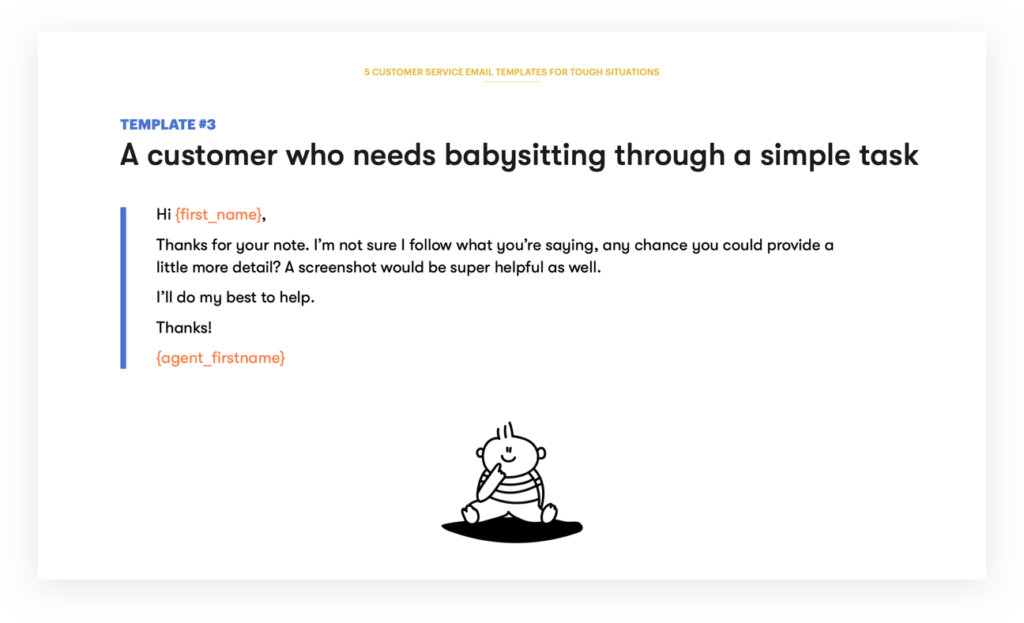Excellent customer interaction is more like treating others how you’ll like to be treated. It is among the vital components of operating a successful business.
A happy customer will always be loyal to your business and even go as far as recommending other customers to you.
You can use other tips to effectively improve your customer experience through different tones of customer interaction. They depend on the criteria you’re using to communicate with them.
Here are some tips you can implement.
General Tips for Customer Interaction
Overall, it’s essential to maintain excellent customer interaction.
Let’s get started on the general tips for exceptional customer experience.
1. Be Nice
The tone you use should always be charismatic. Have you ever wondered why representatives are trained to smile? Well, your positive attitude can transfer to your consumer.
As they say, the energy feeds off each other. You can make your customers become more comfortable and feel better by just smiling. It will swiftly help you connect with your customers.
2. Be Personal and Natural
It’s advisable to talk to your clients as though you’re speaking to a friend at a coffee shop. Being personal and natural will help your customer feel more comfortable.
Don’t bother yourself with those scripted lines, which will make you sound like a robot. This is clearly not what you’re going for, plus, your customers will read onto it.

3. Be Professional
While you want to build your business along the lines of friendship, it’s essential to maintain some level of professionalism, which means holding back on slang and colloquial language.
Maintaining professionalism while still being casual can be a struggle. When you get a hold of it, you can turn a somewhat boring conversation about a package into a pleasant exchange.
4. Adaptability
The start of your conservation should be friendly. A few minutes into the conversation should let you know where to go in terms of tone.
If the client is upset, using an upbeat tone will not calm the customer down. Instead, use a concerned and empathetic tone to be formal while talking to older people.
It’s, therefore, essential to know when to adapt to new tones to get the conversation going.
5. Be Empathetic and Sincere
Showing sincerity and empathy is more than just a linguistic skill but listening skills too. It’s wise to let the customer know you’re listening by constantly assuring them while they tell you their story.
Try asking questions or put in some verbal indication on the other end of the line. Additionally, you can speak in a particular voice to show you care.
Tone Tips Over a Chat App
To be in a better position to establish a connection over the chat app, you must match the tone of your prospective customers.
Matching your customer’s tone over a live chat can be a struggle, but you can be better positioned to do it with the tips below.
Identify and Match Customer’s Tone
You can’t match a customer’s tone if you haven’t identified the tone. The tone can be identified by formalities, punctuation, and the use of words. Here’s how you gauge their tone.
1. Formality
First, determine if your customer is formal or informal. Informal suggests the client is relaxed; look at colloquial greeting like hi or hey.
The conversation can also have tons of emojis. Experts usually recommend a friendly customer tone. While formal is a bit more serious, starting a greeting with a “hello” can be enough.
2. Content
The punctuation of the content will also help you identify a customer’s tone. If you get short sentences in content, it indicates a serious terse tone, which needs a severe empathetic tone.
When you see words that mitigate the customer’s tone, it suggests a friendly and patient approach.
3. Context
The topic of conversation or context will also determine your tone. A customer asking about their money wouldn’t be chilled out. They may have a serious but friendly tone.
On the other hand, if you’re talking to a customer inquiring about a product, the tone will be a bit warm.

4. Matching Your Customer’s Tone
After identifying the tone, you’ll easily adjust your tone to match it. Relax your tone when your customers use a friendly or informal tone. You can swap hellos with colloquial like hi or hey. If it fits your branding, you may use a GIF.
Remain serious with a customer who has a formal or negative tone. A friendly tone will not go well with an upset client. Angry or terse customers will need you to respond appropriately and not match their energy.
Remember always to remain professional and within the bounds of your company’s tone of voice. Funny GIFs have no place in a live chat room with a client.
Tone Tips Over Email
The tone is usually conveyed through word choices, syntax, punctuation, sentence length, and letter case, among other things.
You’ll use a confident, courteous, and sincere tone if you’re writing a professional email. It would be best to refrain from using nondiscriminatory that stresses the “you” attitude. Use subordination and emphasis appropriately.
1. Punctuation
Using punctuation like exclamation marks is an excellent way to show enthusiasm and positivity. Writing “Ok” alone can seem cold, so you can write “Ok! Got it,” which can set the positive tone you’re going for.
2. Capitalizing
Using caps on email may sound like you’re shouting, which is bad for business. Don’t use capitalization; you can only incorporate them in abbreviations.
3. Abbreviations and Emojis
You can use abbreviations and emojis to give your email a personal or casual touch. It’s, however, essential to use them in the proper context.
Please don’t go overboard with them as you don’t know how familiar your customers are with online slang. Nevertheless, when used sparingly on your email, it can give positive vibes.

Overall, you can use a colloquial greeting like hey or hi if you’re writing a friendly email. Keep it friendly and respectful. Don’t be too casual or laid back. Emails that are positive and friendly are received well and elicit the exact response you’re going for.
To make sure you won’t get confused, here are some canned responses examples to use.
Tone Tips Over the Counter (Face to Face)
You’ll identify the tone of your customers from the way they use their vocal and visual cues.
The way a customer inflect words and how they express themselves can tell you how they feel and add meaning to what they are saying.
Here are tips to help you effectively speak clearly while interacting face to face with a customer.
1. Be Welcoming
A simple gesture of smiling can enhance the customer experience. Let your customers know you’re happy to see them. Make them feel welcomed.

2. Listen
Be empathetic to the needs of customers. Diligently, find ways to solve their grievances to make your customers and the business happy. Talk less, and listen more. It shows customers their questions are heard.
3. See Different Perspectives
Always look at things from the customer’s point of view. It can make you think twice about the action you’re about to take. Basically, treat your customers how you’ll like to be treated.
4. Know Your Products
Most clients come to ask questions about your products. It’s, therefore, essential to know the features of your products at your fingertips. The consumer will doubt your services if you fail to answer the nitty-gritty questions about the product you’re selling.
Tone Tips Over the Phone
Many customers prefer calling a business to ask essential questions about the service. Phone conversation is all about how you’re saying the message you’re trying to convey. These tips will ensure you can respond to calls effectively.
1. Cadence, Volume, and Rhythm
How clear and fast your speaking is can set the tone.
Speaking too fast will make it seem like you’re in a rush to get the conversation done, whereas speaking too slowly will make your customers think you don’t really care about the conversation. It’s, therefore, essential to have a steady pace, clear voice that portrays confidence.
2. Gestures and Body Language
While talking over the phone to customers, it’s wise to imagine you’re talking to someone who’s in front of you – Smiling while greeting them or showing facial expressions while saying sorry can, therefore, go a long way in creating an authentic tone.

3. Checking for Understanding
It’s imperative to pause and check whether or not your caller is grasping everything you’re saying. The customer will have a chance to ask questions for clarity. Pausing shows you care.
Wrapping Up!
Whether you’re talking to clients via email, live chat, phone, or face to face, it is imperative to determine their tone and try to match them.
The process can effectively increase the level of understanding between your business and customers.
When a loyal customer has an issue with the product, try to seek solutions rather than excuses.
Customers will automatically see you care more about them, not their money, and will continue buying from you. Maintaining clients is way more important than getting new ones.
Want to optimize your customer service and sales more? We’ve prepared helpful resources for you!


